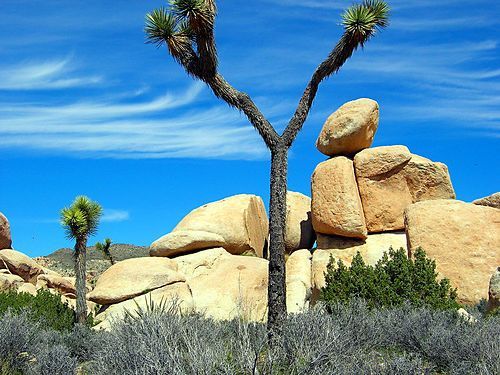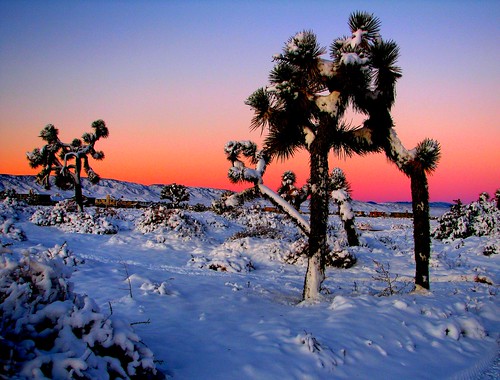
Joshua Tree – Root and Branch Review
See the Joshua tree as early Mormon settlers did in the barren desert lands of Utah and Arizona. Deep roots and leaves designed to minimise transpiration allow this tree to survive for many years.
Key Features of the Joshua Tree
- Latin name – Yucca Brevifolia other common names Palm tree yucca, Tree yucca
- Height – Can grow to 40 feet tall
- Type of tree – Evergreen
- Leaves – Sharp edged, spiky, strap shaped and leathery
- Flowers – Bell shaped, pungent, cream or yellow flowers in upright clusters
- Fruit – Fleshy red-brown capsule
- Bark – Grey – brown ridged
- Family – Asparagaceae agava
Origins and Distribution of the Joshua Tree
- Found in the rugged cowboy country deserts of North America.
- Mojave desert where it may have been named by Mormon pioneers.
Uses and Attributes of the Joshua Tree
- Native Americans wove the leaves into baskets.
- Flowers and seeds are edible.
- Settlers used the wood for fence posts
Gardeners Tips for the Joshua Tree
- Unless you live in a desert give this tree a miss.
Other Varieties of Joshua Tree
- Yucca brevifolia jaegeriana or Jaeger’s Joshua tree is also called the pygmy yucca .
- Yucca brevifolia herbertii is also called Webber’s yucca or Herbert Joshua tree but both may two varieties of the same tree.
- The Yucca family is a large genus in the Agaveacea group
Joshua Tree comments from elsewhere
- The tree is pollinated by the yucca moth which is attracted by the flowers scent. The larvae then survive by eating the seeds. This seems self defeating but then there is little food in the desert.
- Joshua Trees have a deep and extensive root system, with roots reaching up to 36 ft from the fibrous trunk
Credits
Joshua Tree by cybaea CC BY-SA 2.0 Joshua tree from the Joshua Tree National Park
Joshua Tree Blooming by outdoorPDK CC BY-NC-SA 2.0
Joshua Trees in Winter by Rennett Stowe CC BY 2.0


